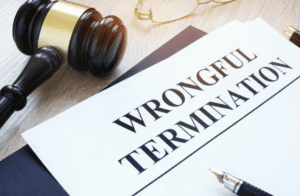 In many cases, you should—or must—take several steps before filing a claim of discrimination against your employer. In this chapter, we’ll cover the preliminary steps that normally precede pursuing a claim with an agency or a court.
In many cases, you should—or must—take several steps before filing a claim of discrimination against your employer. In this chapter, we’ll cover the preliminary steps that normally precede pursuing a claim with an agency or a court.
Step 1: Beat the Filing Deadline
The first step is to retain your attorney and determine the time limits to file your complaint. A dizzying array of statutes limits the time you have to bring a complaint—these are appropriately called statutes of limitation.
For instance, if your boss punches you, in most jurisdictions you have at least two years to bring a lawsuit. But if you work in the private sector and your boss denies you a promotion because you are pregnant, you have at most three hundred days to file a charge with the EEOC. If you fail to meet this deadline, you lose your right to sue forever, no matter how good your claim is. And, if you are a federal government employee, you have only fortyfive days to file a complaint with the EEO office.
The first thing your attorney will try to find out is how much time you have to file a complaint. If you have a lot of time, the attorney will likely spend at least a couple of weeks getting the facts of your case straight before taking action. If you have only a couple of days to get something filed, then filing clearly becomes the priority. Your attorney is likely to focus on the bare bones necessary to get the filing done and then, after you have filed, will circle back to learn all the details of what happened. You sometimes will hear attorneys talk about “stopping the clock” on the statute of limitations. This means preventing the clock from running out on your claim. An attorney need not know all the facts to file a claim with the EEOC—just enough to know that you have a case. Once your claim is filed, the attorney has time to work with you to get a complete understanding of the details of your case.
Step 2: Develop the Facts
Next, you’ll meet with your attorney to develop the facts of your case. Attorneys differ on how they handle this process. Some like to do extensive investigation before filing a charge with the EEOC or other administrative agency; others like to wait and develop the case as it proceeds through the agency. Attorneys sometimes fail to be explicit with their clients about how they investigate cases. It is understandably frustrating when you meet with an attorney and experience the excitement of preparing your filing, only to have your attorney go radio silent for weeks or even months after you file a charge or complaint. While it may not be the best customer service, being ignored for a time by your attorney does not necessarily mean that your case is going down the tubes. It may just mean that not much is happening at the agency, so there is not much to do. These peaks and valleys are par for the course in litigation.
Step 3: Send a Demand Letter
The next stage in employment litigation is sending a “demand letter” to your employer. As the name implies, this letter demands something from the company. It lets your employer know that it violated the law and you plan to take action unless it wants to settle. The demand can take the form of money, more severance, extended benefits, and the like, or it can also ask for nonmonetary relief such as an agreedupon employment reference, a requirement that your supervisor not speak badly of you, or an agreement not to oppose your application for unemployment.
Whether to send a demand letter is a matter of strategy. Most attorneys send them (I commonly do), but others consider it a waste of time because many employers won’t do anything until forced to do so by the EEOC or other state agency, which rarely happens, or by the court during active litigation. I usually send them because I have had success settling cases without filing in court. But it is true that some employers will simply sit on
such a letter or drag out negotiations without any real intent to settle. This becomes an issue because the longer you wait to file with the EEOC or a court, the longer it takes to resolve your case.
It is important to remember that the demand letter is not the same as suing your employer; it is technically not considered litigation (though it certainly is adversarial). Sending a demand letter is not something that is public, and it does not involve the courts.





